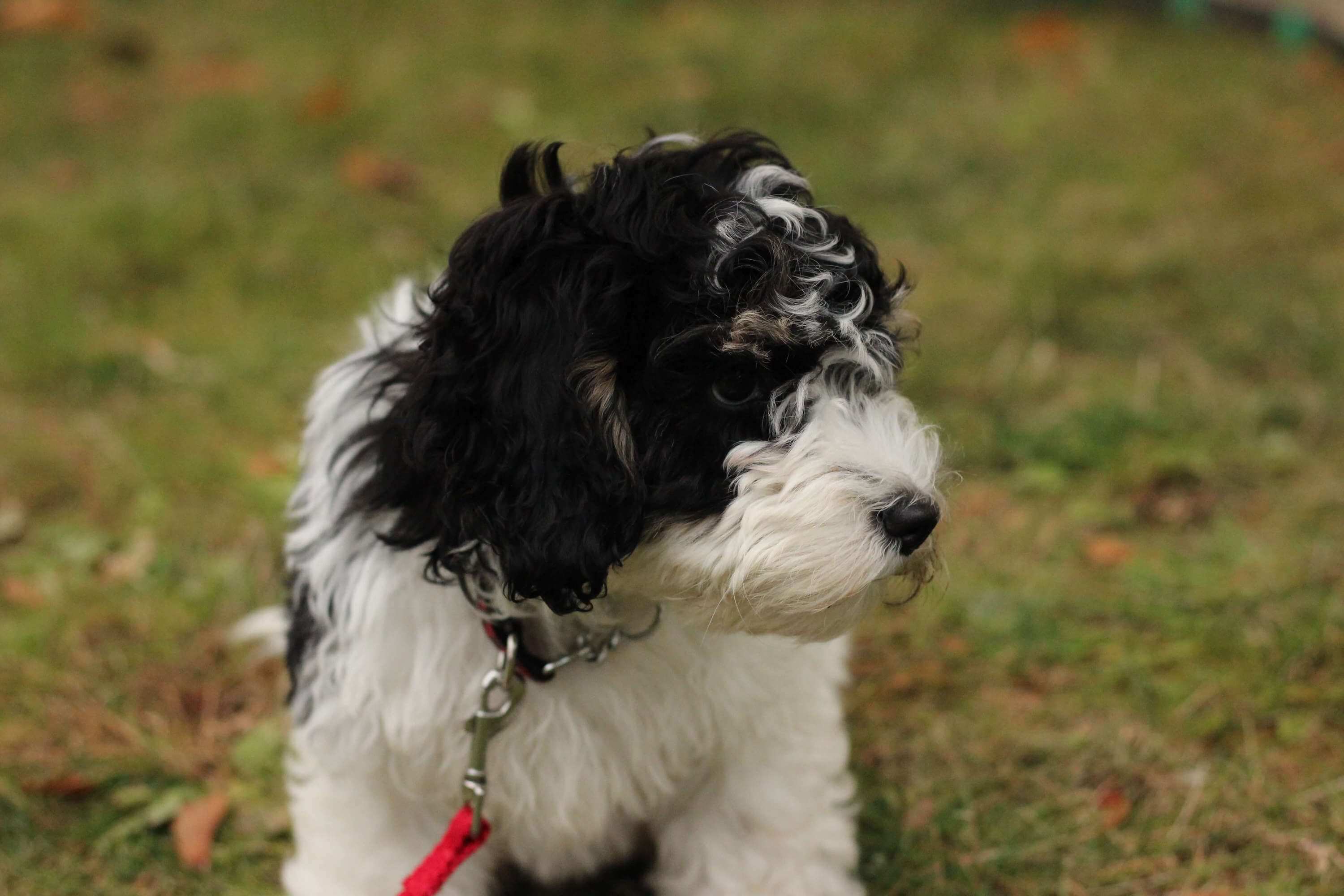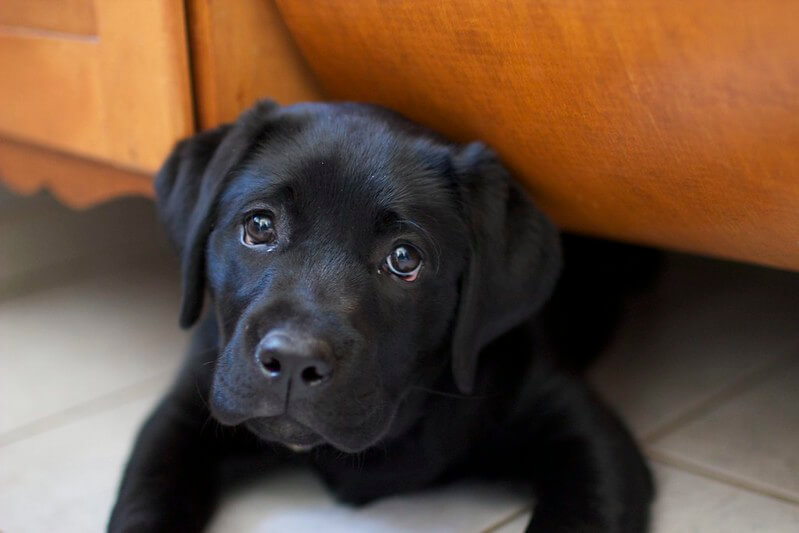Basic Dog Obedience Training
Isn't Just for Working Dogs
You've just brought home your new ball of fluff (or maybe an older rescue dog?) and the whole family is head-over-heels in love with her. Basic dog obedience training is the furthest thing from your minds!
Everything about this pup seems lovable and perfect... her soulful eyes, her soft baby fur, her sweet waggly tail and puppy breath... no? Puppy breath is just a thing for me? Please don't tell me I'm alone, here.
But wait. A few short weeks later and the honeymoon abruptly comes to a screeching end. Or maybe even sooner.
You're short on sleep (seriously?? why did no-one warn me that it's like having a newborn baby in the house!), the kids are tiring of having their toys chewed up, your pant legs are getting holes in them from having an exuberant puppy constantly using them as a tug toy, and the puddles.
It seems the bubble has been popped. Things need to change around here FAST, before you all lose your minds! Solution? You need to teach your new family member who is the leader and how to follow simple commands...
Welcome Home
Ideally, basic dog obedience training should be started right away when a new puppy or adult dog joins your family. Forget about waiting a couple weeks for the dog to "settle in".
But if you missed that memo and chaos has already
claimed your home, don't worry - you can definitely still turn things
around!
As a dog owner myself, I have been where you are right now. As a certified dog trainer, I have the answers you so desperately need. Basic dog obedience training is where you'll need to start with a new puppy, or an adult dog that has little or no obedience training.
I recommend and use balanced training for all breeds, personalities, and sizes of dogs and puppies.
If you haven't already done so, take a minute to read about my recommended dog training method, because it's good to know at least a little about all methods. Being informed is the first step to making a change!
First Steps
Initially your training will consist of house training (at least for a puppy) and crate training (for both puppies and adult dogs).
My first dog, Justice, was house trained easily within a week, and crate trained within a couple weeks as well! Milo, our rescue Cockapoo, took a little longer, but he's also house and crate trained too.
A crate is going to be your new best friend when it comes to house training - they go hand in hand. And used properly, your dog will love his crate! I can often find Milo curled up in his crate throughout the day, and he sleeps there at night, too. It's his safe place, where he is comfortable, safe and calm.
Crate training a dog is easy, if you do it the right way. Take your time on each step, and never use it for punishment or "time-outs"! It makes house training a puppy a breeze, so make sure that you start as soon as your puppy or new dog comes home.
Now, what about formal basic dog obedience training? Normally, I always recommend taking your puppy to obedience classes if you're able to,
as opposed to attempting training on your own at home. This is absolutely the way to go, as it benefits both your and your dog to learn to train under the added distractions of noise and other dogs.
I do understand, however, that not everyone has the means to afford this, and sometimes you simply may not have any trainers nearby. Not to mention Covid lockdowns and restrictions...
Enter the era of online dog training courses. First choice? No, not in my opinion, if I'm being honest. But it is an option, and sometimes the only option. I hope to add some online training classes very soon - is this something you would be interested in seeing here? If so, let me know!
 Our puppy, Milo, learning a basic dog obedience training skill - stay.
Our puppy, Milo, learning a basic dog obedience training skill - stay.Basic Training Tips
To get you started with basic training, I want to give you some simple tips to start putting into practice with your puppy or adult dog. Yes, an older dog can learn basic obedience training, too!
Always be consistent.
Use the same commands all the time to avoid confusing your dog, and make sure the whole family is on the same page.
Don't change the rules... either he's allowed to pull you on your walks, or he needs to heel by your side each time - you'll confuse him by switching up the rules depending on what mood you're in, or who's walking him!
Don't give time outs!
A dog can't understand a time-out. Dogs live for the moment, so reward and correction must be for the moment, too. The only thing putting your dog in his crate for a time-out will do, is make him hate the crate.
If you want to correct him for chewing your shoes, you have to catch him
in the act, not 10 minutes or an hour later.
Be patient.
Especially with a puppy. They will try your patience at times! Regardless of the age of your dog, you always have to be patient. A dog is never "fully-trained", and will be in training for life.
So realize this, take a deep breath when he doesn't perform up to your standards (which are probably too high!), and keep practicing.
Set your puppy or dog up for success.
If you take your green dog or puppy on the busy sidewalk where dogs and people are walking by, kids are on rollerblades and bikes, bouncing balls... then expect him to do a sit-stay off leash the first time you practice it - yes, he's going to fail.
Understand this - the more often a dog fails at something, the more he's going to want to avoid that exercise because you're never happy with him. Instead, keep distractions to a minimum when first starting basic dog obedience training, and work in tiny increments.
And don't drop the leash until you are 150% sure that your dog will stay. This ensures that the training exercise will be successful, and your dog will be happy to repeat that good behavior again next time!
What Basic Dog Obedience Training Should Include
So what should you be covering for beginner obedience? Using both voice commands and hand signals, a good basic dog obedience training class should consist of teaching your dog the following commands and exercises:
- How to train your dog to sit with four paws on the floor for petting.
- Heeling on a leash without pulling (and yes, "heeling" is the key word, not "loose leash").
- Sit-stay up to a distance of about 6 feet, with the leash on and in your hand.
- Training your dog to lie down.
- Down-stay up to a distance of about 6 feet, again, with the leash on.
- Stand-for-examination for grooming, bathing and visiting the vet - not always included, but it's definitely a bonus.
- Recall or come command - absolutely necessary!
 Basic dog obedience training is good for the dog and good for the owner!
Basic dog obedience training is good for the dog and good for the owner!Be wary of a trainer who tells you to remove the leash from your puppy's collar during these first weeks of training.
As much as you or the trainer might believe in him, a pup or untrained adult dog is not ready for off-leash training yet! That level of training comes with time, and lots of practice and distraction-proofing.
I am also not in favor of segregating puppies from adult dogs in basic dog obedience training. "Puppy classes" aren't the best option in my opinion, especially as the pups are often allowed to play with each other during class.
Why is this a problem? I think you need to be picky about choosing your puppy's friends, otherwise he will pick up bad habits. When a room full of puppies are allowed free reign with each other, it involves a lot of nipping, barking, jumping and other undesirable behaviors.
Well, what about the socialization aspect? A dog or puppy does not need to be jumping on and sniffing at each other to be socialized. Simply being around other dogs, seeing them, hearing them, being able to smell as they move around is socialization.
I also find that puppies can learn a lot from being around older and calmer dogs. The same thing goes for specialized small dog classes. You are not going to solve a small dog's fear of bigger dogs if you won't allow them in the same room!
By training all breeds, sizes, and ages together, all of the dogs will benefit from the socialization.
Most dogs are ready to move on from basic dog obedience training after about 10 weeks, so long as you have been practicing every day for at least 15 minutes to a half hour.
Remember, it's not worth it to rush to the next level if your dog is not quite there yet. I don't believe a puppy or adult dog should continue to more advanced training until they can at least do:
- A one minute sit-stay with the handler holding the leash at 6 feet without needing to be corrected more than once.
- A three minute down-stay with the handler holding the leash at 6 feet (again, no more than one correction needed).
- Nice loose-leash heeling, even with some distractions around (no sniffing the ground, pulling, or lagging behind).
- A recall from a sitting position about 6 feet away - again, on leash.
Okay, ready to move up from basic dog obedience training? See what advanced dog training is all about!
- Home
- Basic Training


